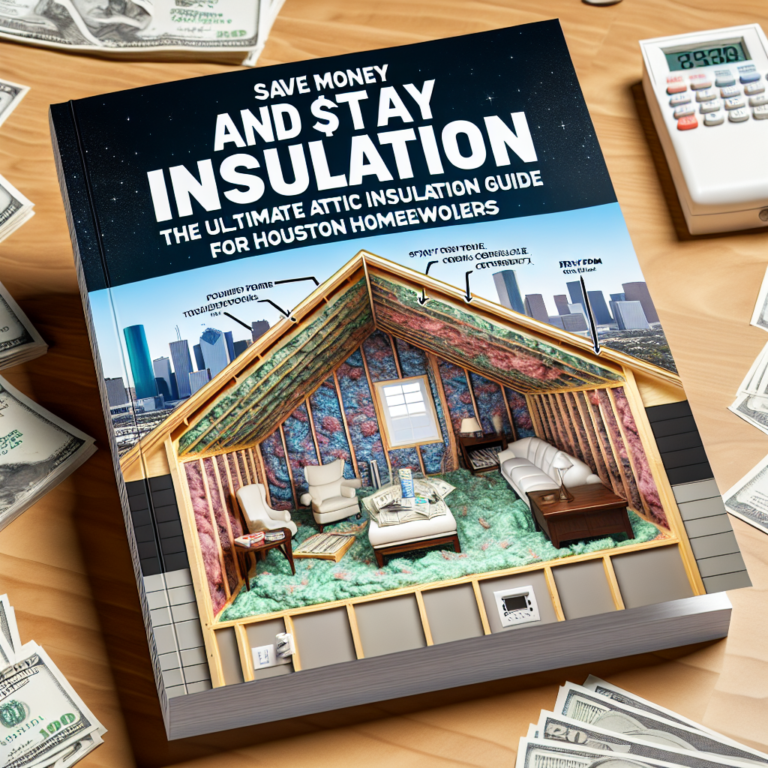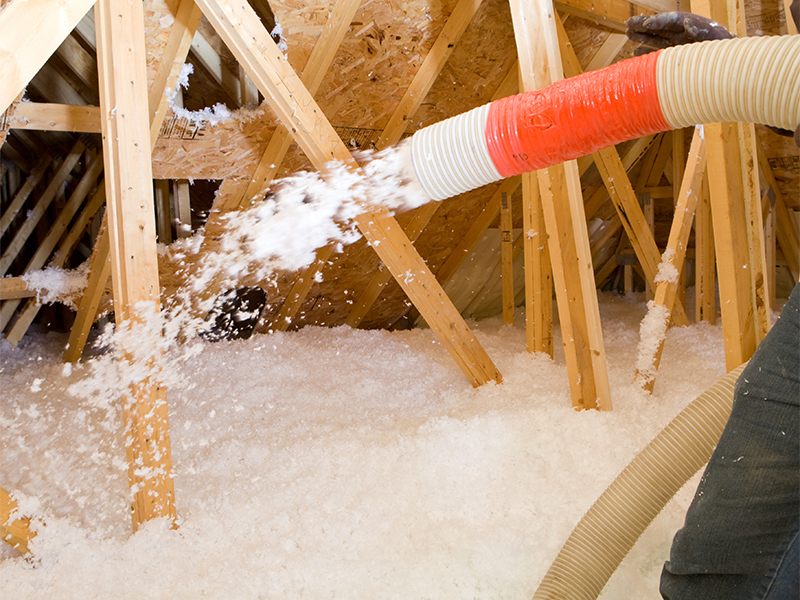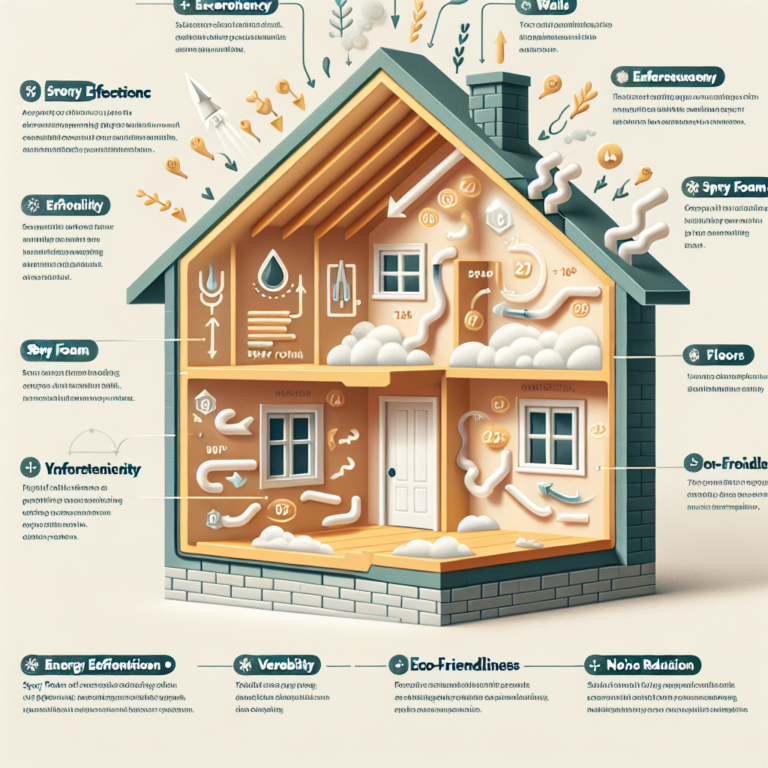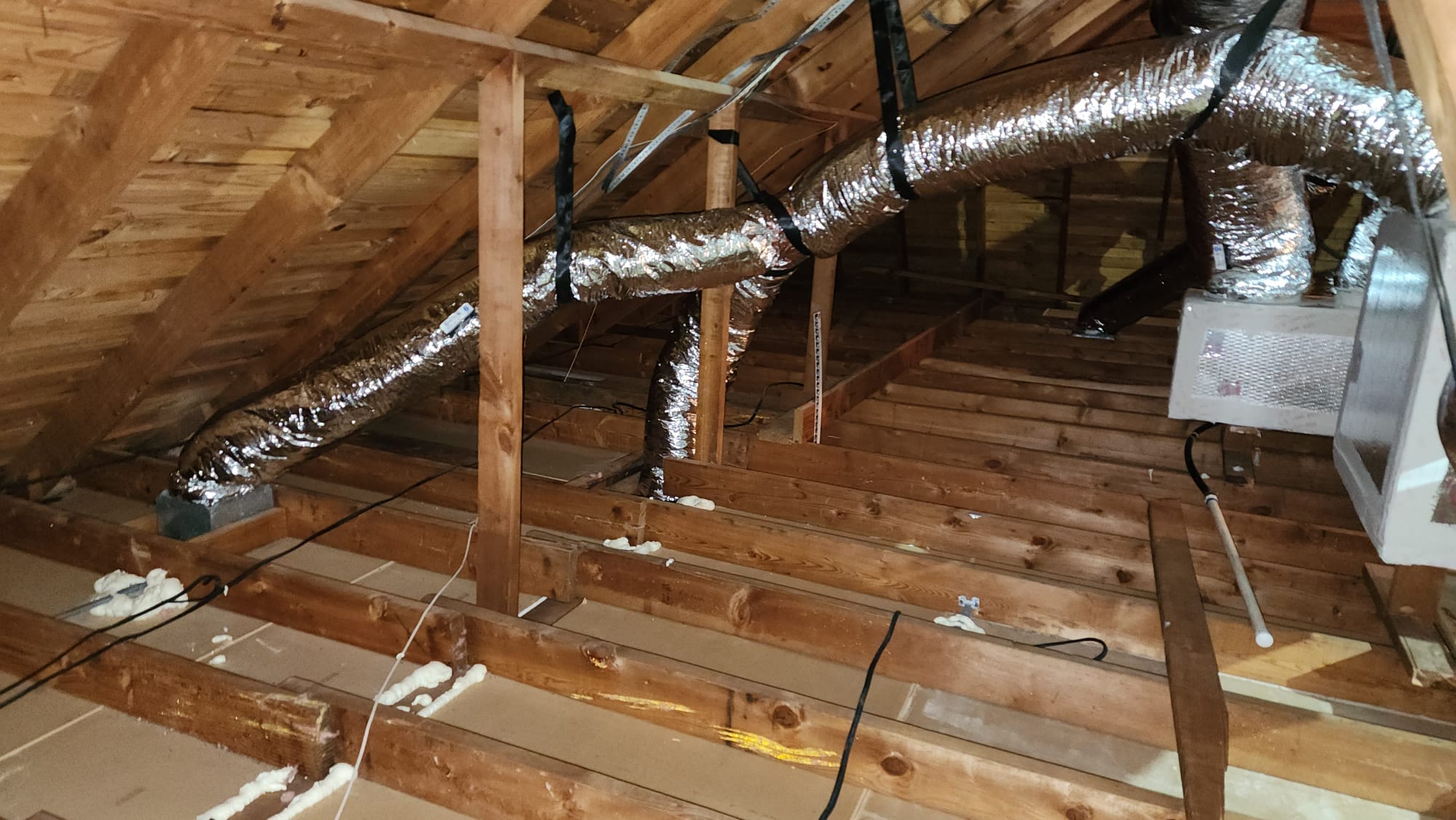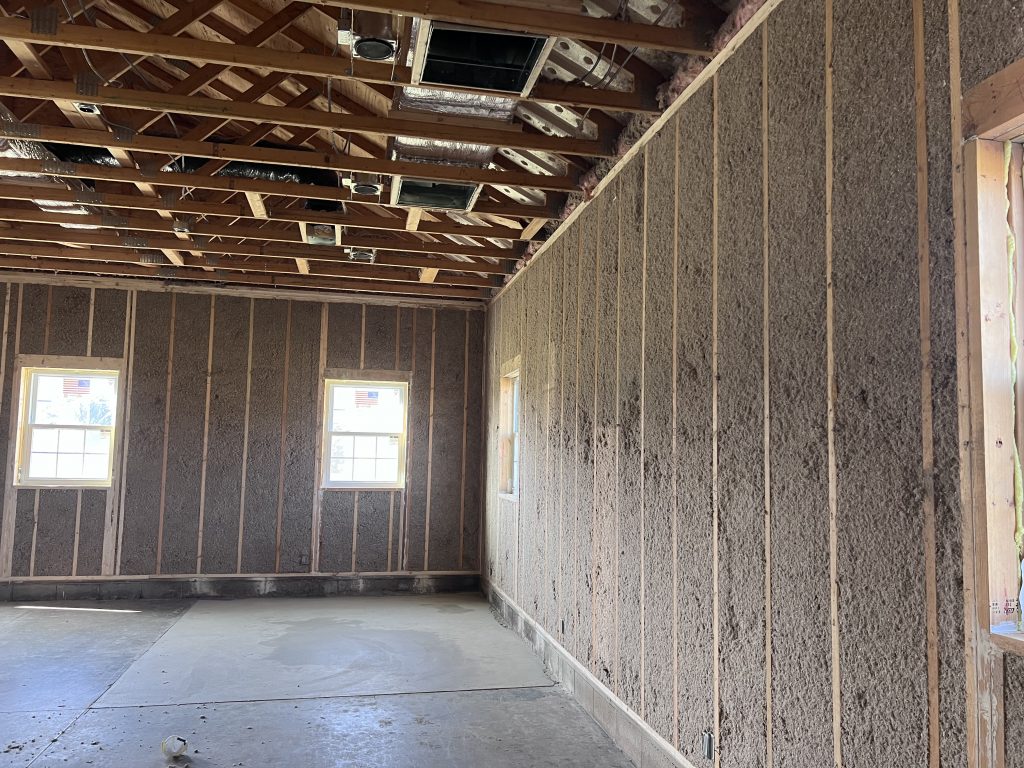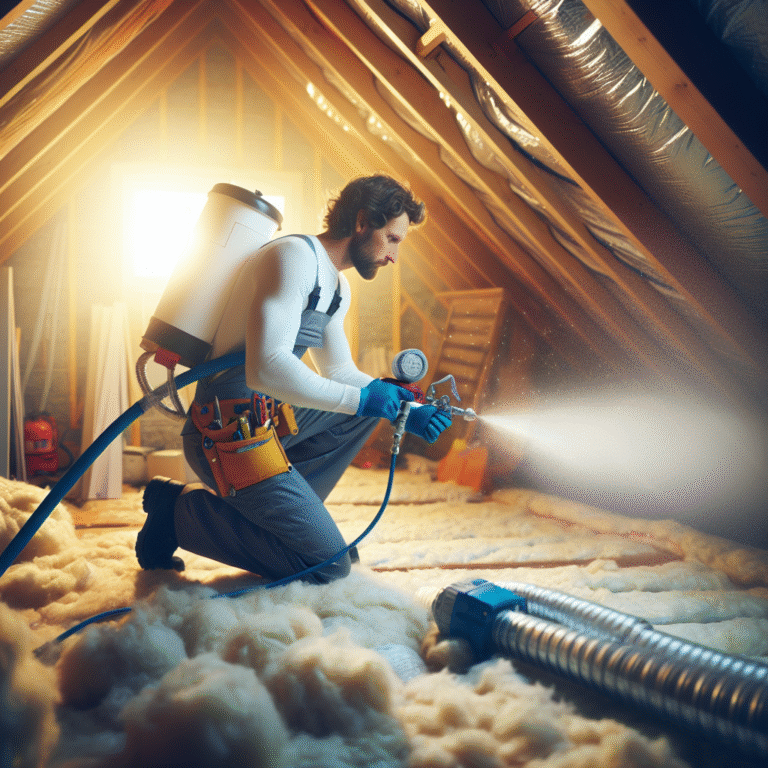-
Table of Contents
“Insulate your attic with ease – all your questions answered about blown-in insulation!”
Ready to learn more about blown-in attic insulation? Check out our FAQ page and discover the benefits of this energy-efficient solution for your home. Don’t wait, visit texasinsulationsolution.com now to get started!”
Introduction
Welcome to our FAQ guide on blown-in attic insulation. This guide is designed to answer common questions about blown-in attic insulation, including what it is, how it works, and its benefits. Whether you are a homeowner looking to improve your home’s energy efficiency or a contractor seeking information on this type of insulation, this guide will provide you with the answers you need. So let’s dive in and learn more about blown-in attic insulation.
Benefits of Blown-In Attic Insulation: Exploring the Advantages
Blown-in attic insulation is a popular choice for homeowners looking to improve the energy efficiency of their homes. This type of insulation involves using a machine to blow loose insulation material, such as fiberglass or cellulose, into the attic space. It is a cost-effective and efficient way to insulate your attic, and it offers a range of benefits. In this article, we will explore the advantages of blown-in attic insulation and answer some frequently asked questions about this type of insulation.
One of the main benefits of blown-in attic insulation is its ability to improve the energy efficiency of your home. Attics are often a major source of heat loss in homes, as warm air rises and escapes through the roof. By insulating your attic, you can prevent this heat loss and keep your home warmer in the winter. This can lead to significant savings on your energy bills, as your heating system won’t have to work as hard to maintain a comfortable temperature.
Another advantage of blown-in attic insulation is its ability to reduce noise levels in your home. The insulation material acts as a sound barrier, absorbing and reducing noise from outside sources. This can be especially beneficial if you live in a noisy neighborhood or near a busy road. Additionally, the insulation can also help to reduce sound transfer between rooms in your home, making it a great choice for those looking to create a quieter and more peaceful living space.
Blown-in attic insulation is also known for its ability to improve indoor air quality. The insulation material helps to seal any gaps or cracks in your attic, preventing outside pollutants, such as dust, pollen, and allergens, from entering your home. This can be particularly beneficial for those who suffer from allergies or respiratory issues. By keeping these pollutants out, blown-in attic insulation can help to create a healthier and more comfortable living environment for you and your family.
One of the most significant advantages of blown-in attic insulation is its ease of installation. Unlike other types of insulation, which may require professional installation, blown-in insulation can be easily installed by homeowners with the right equipment. This can save you time and money, as you won’t have to hire a contractor to do the job for you. Additionally, the loose insulation material can easily fill in any gaps or hard-to-reach areas, ensuring that your attic is fully and evenly insulated.
Another benefit of blown-in attic insulation is its durability. The insulation material is designed to last for many years, and it won’t settle or compress over time, unlike other types of insulation. This means that you won’t have to worry about replacing or adding more insulation in the future, saving you both time and money in the long run.
Now, let’s address some frequently asked questions about blown-in attic insulation.
Q: How much does blown-in attic insulation cost?
A: The cost of blown-in attic insulation can vary depending on the size of your attic and the type of insulation material used. However, it is generally more affordable than other types of insulation, making it a cost-effective option for homeowners.
Q: Is blown-in attic insulation safe?
A: Yes, blown-in attic insulation is safe when installed correctly. It is non-toxic and does not contain any harmful chemicals. However, it is essential to wear protective gear, such as a mask and gloves, when installing the insulation to avoid any irritation.
Q: How long does blown-in attic insulation last?
A: Blown-in attic insulation can last for many years, with some materials having a lifespan of up to 50 years. However, it is essential to regularly check and maintain your insulation to ensure its effectiveness.
In conclusion, blown-in attic insulation offers a range of benefits, including improved energy efficiency, noise reduction, and better indoor air quality. It is also easy to install, durable, and cost-effective. If you are looking to improve the comfort and efficiency of your home, consider blown-in attic insulation as a viable option.
Common Questions About Blown-In Insulation: Answered
Blown-in attic insulation is a popular choice for homeowners looking to improve the energy efficiency of their homes. However, many people have questions about this type of insulation and how it works. In this article, we will answer some of the most common questions about blown-in attic insulation.
What is blown-in attic insulation?
Blown-in attic insulation, also known as loose-fill insulation, is a type of insulation that is installed by blowing or spraying it into the attic space. It is made up of small particles of materials such as fiberglass, cellulose, or mineral wool. These particles are blown into the attic using a special machine, filling in all the nooks and crannies to create a layer of insulation.
How does blown-in attic insulation work?
Blown-in attic insulation works by creating a barrier between the inside of your home and the outside elements. It helps to keep warm air inside during the winter and cool air inside during the summer. This reduces the amount of energy needed to heat or cool your home, resulting in lower energy bills.
What are the benefits of blown-in attic insulation?
There are several benefits to using blown-in attic insulation. Firstly, it is a cost-effective way to improve the energy efficiency of your home. It can also help to reduce noise levels from outside, making your home more peaceful. Additionally, blown-in insulation is easy to install and can be done quickly, with minimal disruption to your daily routine.
Is blown-in attic insulation safe?
Yes, blown-in attic insulation is safe when installed correctly. The materials used in blown-in insulation are non-toxic and do not pose any health risks. However, it is important to hire a professional to install the insulation to ensure it is done safely and effectively.
How much does blown-in attic insulation cost?
The cost of blown-in attic insulation can vary depending on the size of your attic and the type of insulation used. On average, homeowners can expect to pay between $1,500 and $2,500 for blown-in insulation in a standard-sized attic. However, this cost can be offset by the energy savings you will see in the long run.
How long does blown-in attic insulation last?
Blown-in attic insulation can last for many years, with an average lifespan of 20-30 years. However, it is important to have your insulation checked and replaced if necessary, as it can become compressed over time, reducing its effectiveness.
Can blown-in attic insulation be installed over existing insulation?
Yes, blown-in attic insulation can be installed over existing insulation. However, it is important to have a professional assess the condition of the existing insulation to ensure it is still effective. If the existing insulation is damaged or compressed, it may need to be removed before installing the blown-in insulation.
How do I know if my home needs blown-in attic insulation?
There are a few signs that your home may benefit from blown-in attic insulation. High energy bills, uneven temperatures throughout your home, and drafts are all indicators that your home may not be properly insulated. Additionally, if your home is older and has never had insulation installed, it is likely that it could benefit from blown-in insulation.
In conclusion, blown-in attic insulation is a cost-effective and efficient way to improve the energy efficiency of your home. It is safe, long-lasting, and can be installed over existing insulation. If you are considering blown-in insulation for your attic, be sure to consult with a professional to determine the best type and amount of insulation for your home. With proper installation, blown-in attic insulation can provide numerous benefits for your home and your wallet.
The Process of Installing Blown-In Attic Insulation: What to Expect
Blown-in attic insulation is a popular and effective way to improve the energy efficiency of a home. It involves using a machine to blow loose insulation material, such as fiberglass or cellulose, into the attic space. This method is often preferred over traditional batt insulation because it can easily fill in small gaps and crevices, providing better coverage and reducing air leakage. If you are considering installing blown-in attic insulation in your home, you may have some questions about the process. In this article, we will answer some frequently asked questions to help you understand what to expect during the installation process.
What is the first step in installing blown-in attic insulation?
The first step in installing blown-in attic insulation is to prepare the space. This involves clearing out any debris or objects that may be in the attic, as well as sealing any air leaks. The insulation will not be effective if there are gaps or holes in the attic that allow air to escape. It is also important to ensure that the attic is properly ventilated before installing the insulation.
Do I need to be present during the installation process?
It is not necessary for you to be present during the installation process. However, it is recommended that you are available to answer any questions the installers may have and to inspect the work once it is completed. If you are unable to be present, make sure to communicate any specific instructions or concerns to the installers beforehand.
How long does the installation process take?
The length of the installation process will depend on the size of your attic and the amount of insulation needed. On average, it can take anywhere from a few hours to a full day. The installers will need to set up the equipment, blow in the insulation, and then clean up the area once they are finished.
Will there be any mess or debris left behind after the installation?
There may be some minor mess or debris left behind after the installation, but the installers will clean up the area before leaving. They will use a vacuum to remove any excess insulation and will also dispose of any packaging materials. It is important to note that some insulation material, such as cellulose, may settle over time, so you may need to do some light cleaning in the attic in the future.
Is there anything I need to do to prepare for the installation?
Before the installation, it is recommended that you cover any items in the attic that you do not want to get dirty. This can include furniture, stored items, or any other belongings. You should also make sure that the attic access is clear and easily accessible for the installers.
What safety precautions are taken during the installation process?
The installers will take all necessary safety precautions during the installation process. This includes wearing protective gear, such as masks and goggles, to prevent any irritation from the insulation material. They will also make sure that the attic is well-ventilated to avoid any potential health hazards.
In conclusion, installing blown-in attic insulation is a relatively straightforward process that can greatly improve the energy efficiency of your home. By preparing the space, being available for questions, and ensuring proper ventilation, you can expect a smooth and efficient installation. It is also important to communicate any specific concerns or instructions to the installers beforehand. With the right preparation and a professional installation, you can enjoy the benefits of a well-insulated attic for years to come.
Q&A
1. What is blown-in attic insulation?
Blown-in attic insulation is a type of insulation that is installed by blowing loose insulation material, such as fiberglass or cellulose, into the attic space. This method allows for a more even distribution of insulation and can be a cost-effective way to insulate an attic.
2. How does blown-in attic insulation compare to other types of insulation?
Blown-in attic insulation has several advantages over other types of insulation. It can be installed quickly and easily, even in hard-to-reach areas. It also provides better coverage and can fill in gaps and crevices more effectively. Additionally, blown-in insulation is more resistant to moisture and mold growth.
3. Is blown-in attic insulation a good choice for my home?
Blown-in attic insulation can be a good choice for many homes, especially those with existing insulation that needs to be topped up or replaced. It is also a good option for homes with irregularly shaped attics or hard-to-reach areas. However, it is important to consult with a professional to determine the best type of insulation for your specific home and climate.
Conclusion
In conclusion, blown-in attic insulation is a cost-effective and efficient way to improve the energy efficiency of a home. It can help reduce energy bills, improve indoor comfort, and increase the overall value of a property. By understanding the basics of blown-in insulation and following proper installation guidelines, homeowners can reap the benefits of this insulation method for years to come. It is important to consult with a professional and address any concerns or questions through reliable sources to ensure the best results. With proper installation and maintenance, blown-in attic insulation can be a valuable investment for any homeowner.



